The Chinese carnation has long become a favorite of gardeners and landscape designers. Its magnificent and colorful bloom does not leave anyone indifferent, and relatively simple care gives enough reason to decorate its country site, territory before the entrance or at least a window sill apartment. A variety of shades of buds and unpretentiousness made Chinese carnation with one of the most popular flowers, and in this article you will learn everything about its cultivation.
Varietal features
As you can guess from the name, the birthplace of the Chinese carnation is China, from where she came first to Europe, and then by the efforts of local gardeners and breeders spread throughout the world. The flower stems grow at a height of a maximum of 50 cm and are covered with paired narrow and long leaves, in individual varieties, they can slightly spin, forming bizarre curls and increasing the decorative qualities of the plant. There are several dwarf species growing no more than 15-17 cm in height. Flowers from the beginning of June to mid august. The color of the Chinese carnation flowers can be the most diverse: white, pink, allay, burgundy, lite. But this species can be distinguished by one characteristic feature - there are small slits and strips of bright burgundy on all petals.
This is a perennial plant that often behaves like the most real annual - very magnificently and brightly blooms, after which the rest period begins. The carnation can be overwhelmed with a favorable soft southern winter, but in the middle lane of Russia and even more so in the north they are not recommended to leave it in the soil. That is why many gardeners grow it as an annual plant.
Hybrid forms
At first, the long-term Chinese carnation differed from other varieties with bright burgundy specks on the petals, but when she got the spread and a flower seriously interested in European breeders, varieties gained significantly.
The plant is known to the world since the beginning of the 18th century and during this time the flower was obtained by a great set of varieties, differing in height, color of flowers, whimsality, survivability and endurance. Modern breeders make an emphasis on obtaining dwarf-flourishing varieties and hybrids that grow in the form of spherical bushes with a variety of small flowers. Work is also underway to extend flowering period.
The Chinese carnation has a very compact root system, so it can be easily transplanted from the container to open ground, without fear of injury. Of these, beautiful edging for small flower beds and live borders are obtained. Also, thanks to this feature, low-spirited varieties and hybrid plants are perfectly suitable for growing at home. The size of the flowers depends on the varietal features and may be the most different, as well as the structure (there is no small, semi-level and terry chinese carnation).
Useful advice: If you bought a Ranny Dwarf Hybrid, know that such forms are best growing on a well-lit area without drafts. The seeds of hybrids of Chinese cloves are quite expensive, however, the plants obtained from them will cost much cheaper than that selling similar seedlings.
A lot of foreign companies operate over the selection of cloves, and new bizarre forms are constantly appearing on the market. In the mid-19th century, the type of Geddevig Lanciniatus was derived, which is also known as "bordered" carnation, because it has a cut at the end of the petals. This variety looks very beautiful both by itself and in combination with other plants.
To the most popular varieties of Chinese carnations include Diana (in the photo below), Shneebed, Gelstrate, Fuerbal and Charm Magic mixture.
Growing technology
The cultivation of Chinese cloves is pretty simple, and even a beginner gardener will cope with this work. Despite the fact that this is a perennial flower, most of his species are grown as an annual, as the seeds hang out or plant seedlings every spring is much easier than working with one plant, protecting it from frosts. The plant is quite capable of turning the warm winter, but to predict the weather is not even for experienced meteorologists, so it is better to trust the experience of specialists and grow seedlings, especially since it costs much cheaper than buying it in stores.
Seedlings of Chinese cloves are grown from seeds in containers or immediately evicted it into open ground. The best plant feels on a protected area and a well-lit area (permissible light shaders). The optimal option in this case is the eastern South-Eastern side of the site. If you put the carnation in the shade, it will grow and develop, but it is hardly possible to achieve lush flowering.
As for the chemical and physical characteristics of the soil, the plant prefers a sandy or loamy soil. The earth should be well to skip moisture, because otherwise the root carnation system will begin to rotate. Fertilizers need not too much, but before planting the soil should be checked for acidity, and if the level is increased, it is necessary to make a slightly negarageny lime or dolomite flour. This will help you with an article. "Dolomitic flour: application, peculiarities".
Useful advice: Do not be fond of organic fertilizers - Chinese carnation does not like too disrupted soil.
To plant Chinese carnations to the ground should be in April, May, when the days of night frosts have already passed, and the daily temperature does not fall below + 18c.
Reproduction
Chinese cloves are multiplied by seeds and vegetative ways: stalling, tanks and dividing bush. We remind you that the seeds of some varieties and hybrid forms are expensive, but it is still cheaper than buying similar seedlings, so you in any case save.
Annual grades can be multiplied by seeds only, any method will suit the perennials. Carnation seeds are pretty small, oblong shape. They are driving them in the middle of March, but in the southern regions it can be done already at the end of January. It is better not to use peat soil mixture, but take ordinary garden land and add some river sand there for better drainage.
Before planting seeds to the ground, they must be properly prepared - the germination and intensity of plant development depends on it. First, soak the seeds in amber acid, after which you dry a little, but do not dry to the end. Moisten the Earth in the container, make a shallow groove of about 1.5 cm and put the seeds there at a short distance from each other. Then sprinkle the grooves of the earth, again Moisten from the pulverizer and cover the container with a film or glass to create the effect of the greenhouse. Place the seeds in the room with a constant temperature about 20 ° C and wait for the first germs - they will appear in about 10 days. At this time, it is necessary to periodically open the ventilation container and as needed gently moisturize the soil. Do not get carried away with irrigation, because the mooring of the soil can provoke the shock of the carnation with a black leg! When sprouts appear, the film or glass should be removed finally, and the container itself is rearranged on the windowsill or on the balcony so that the sun rays fall on it 4-5 hours per day.
Useful advice: If you notice that seedlings began to stretch intensively, it means it lacks light, and you need to install an additional source of lighting. For this, the daylight lamps of the warm and cold spectrum are suitable.
With the advent of the pair of the first real leaves, you can start recruiting seedlings, and when each plant appears on 4-6 leaves, you need to make up the tops so that the bushes grew up, and styling - so they turn out to be lush and elegant. With the onset of May, seedlings can be planted in open ground. At this time, night frosts are no longer scary, and the weather becomes warm.
If you plan to multiply Chinese carnations with stalling, remember a few simple rules:
- Make cuttings only from young shoots, on which not a single bud appeared.
- Cut the cuttings by 2-3 nodes, making the lower slice at a 1 cm from the node. Cut up the tops and cut down all the leaves so that the power of the plant is not to maintain the viability of these leaves and the tops, but on the formation of the root system.
- Make longitudinal cuts for each stalk.
- Gear cuttings in closed tanks with river sand. It can be a glass jar or plastic container with a lid. Make sure that the level of moisture and temperature during the extension were constant.
If you adhere to these simple recommendations, the cuttings will be allowed root very quickly and easily rooted anywhere. This method is more applied to low and medium-sized cloves, but for high optimal reproduction with the tanks. In this case, it is also necessary to choose stalks without buds, but do not cut them off, but simply coping to the ground, burying in this place to a small depth.
As for the division of the bush, this method is practiced quite rarely and only for some varieties of carnations that have a basking root system, since only in this case all the varietal characteristics of the parent plant can be preserved. It is necessary on the autumn (after the end of flowering) to dig a bush, clean from excess land and carefully divided it into parts so that in each of them there remained at least 3 points of growth (kidneys).
Care
The care of the Chinese carnation is not so compared to many cultural plants. Special caution should be observed with fertilizers - the flower does not really like a large number of organic matter and reacts to it very painfully. Most of all the carnation does not endure fresh manure, so it should immediately be excluded from the feeding and not to plant the nearby culture in need of such fertilizer. The potash and mineral mixes of the Chinese carnation are required 2-3 times per season: when planting in the spring, before flowering and in the flowering period in the summer. If you grow a long-term bush, then in the second year of his life you need to make calcium fertilizer.
Buds on the bushes are dismissed at the same time and flow there too at different times, so for more magnificent flowering there are already faded flowers to neatly coat the garden scissors. Then, with favorable conditions, the carnation can please you with repeated blossoms. For the winter, the entire ground part must be cut off, leaving only 10 cm of the stem. The flower garden needs to be insulated with a mulch, a sweetheart that foliage or cover Loutrasil.
Watering the carnation is needed very moderate, and the lack of moisture it becomes easier than the overabundance. A moderate drought is admissible, but it is not worth chanting a plant to such a diet, because in this case it will accustomed to direct all its strength not for flowering, but to prey for food. After each watering session, we have the land around the bushes to provide a full-fledged root aeration and prevent the appearance of root nematodes. But nematodes visit the carnation quite rarely, unlike the garden toli and the pawkin tick. At the first signs of lesion, the plant must be treated with chemicals or soapy solution. As an effective prevention, experienced gardeners spray the flower beds by the Bordeaux mixture. Wrong care (excess moisture, many organic fertilizers) lead to the development of fungal diseases: fusariosis, rust, root rot.
Planting the Chinese carnation on its site will be one of the most correct solutions. The plant does not require particularly careful care and the whole fee for attention to itself with lush and colorful flowering, lasting all summer and part of the autumn. This fertile material for beginners and experienced landscape designers and just amateur gardeners, even if the site of their creative activity is limited to the windowsill in the urban apartment.

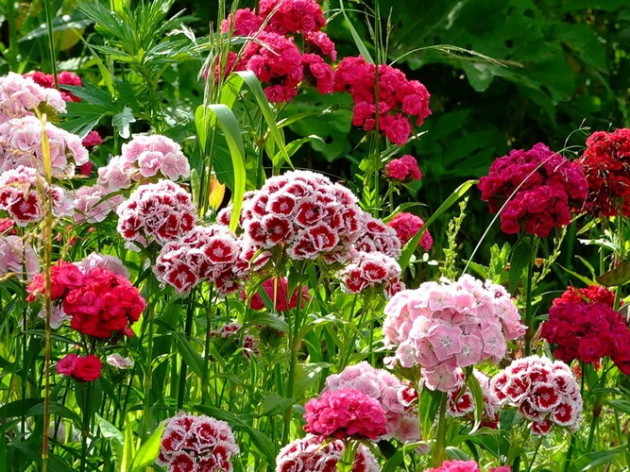
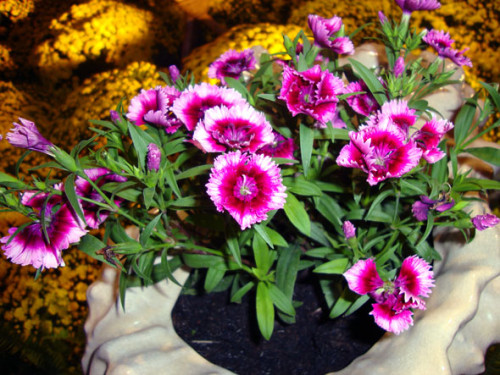
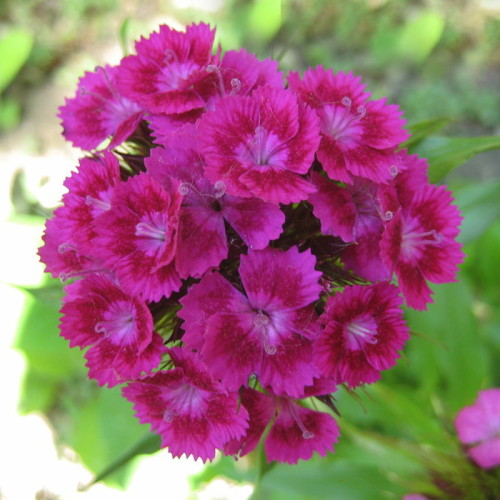
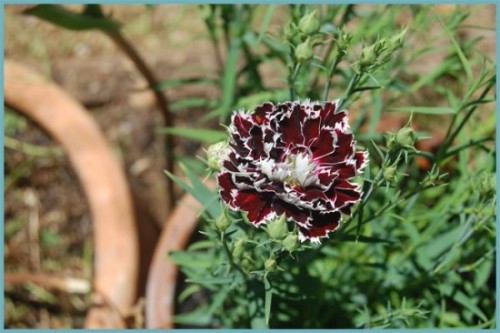
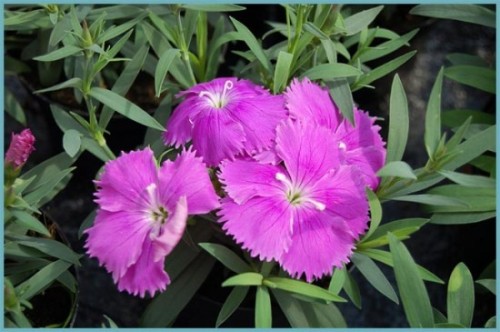
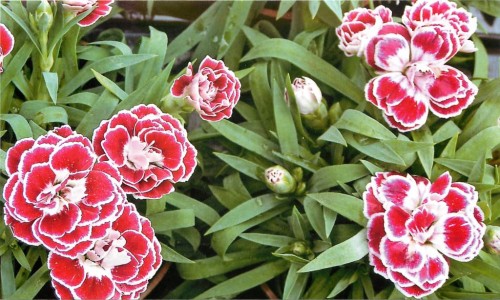
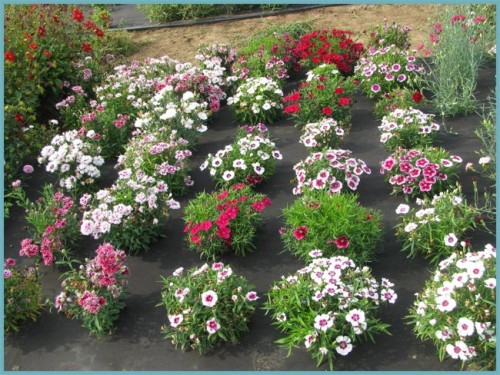

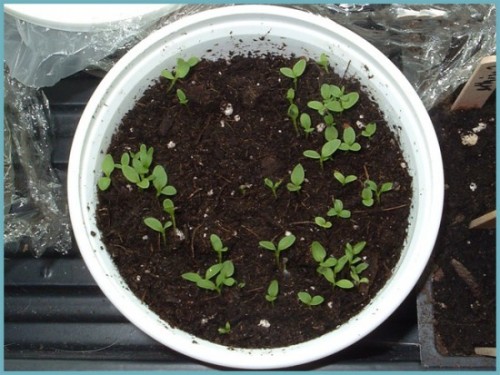
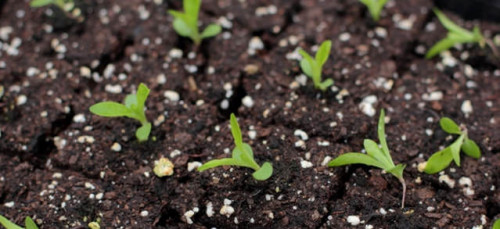
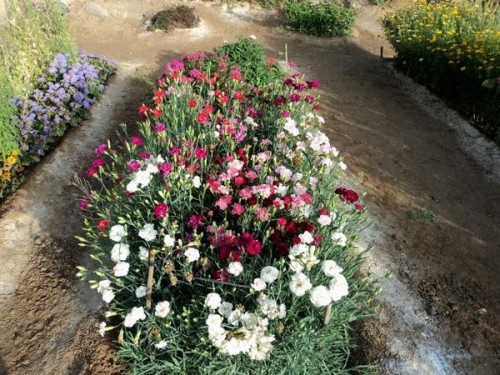
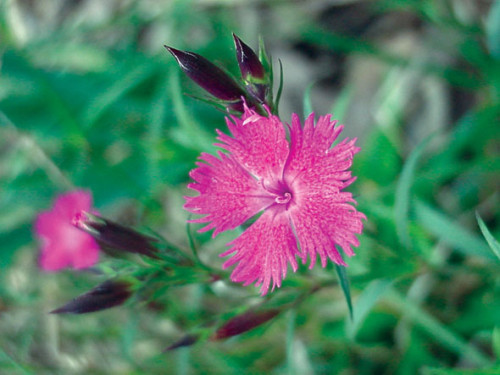
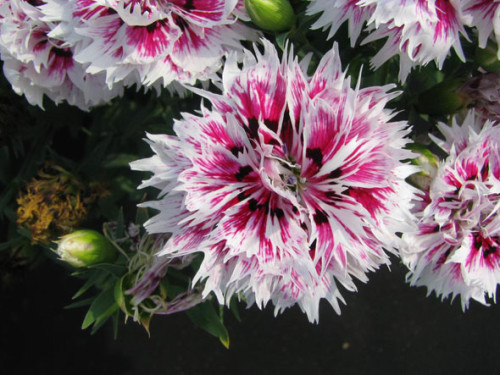
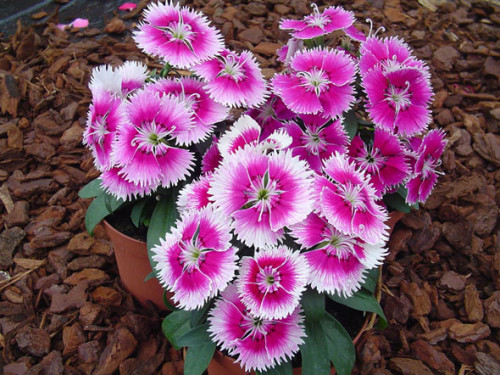
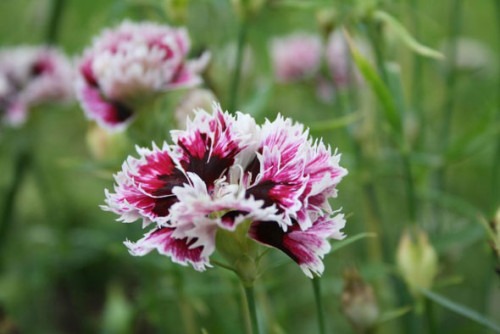
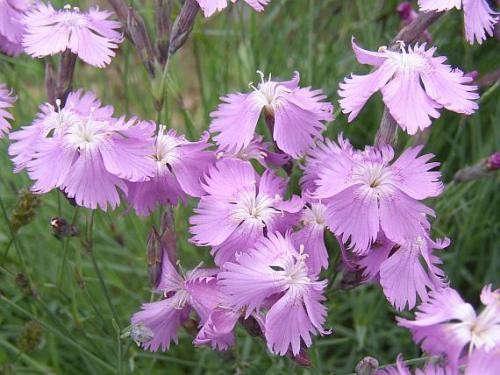
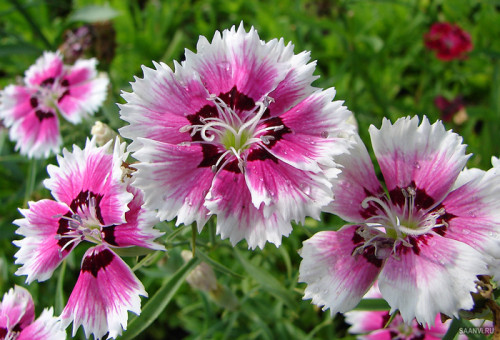












 Start a discussion ...
Start a discussion ...